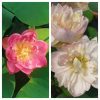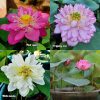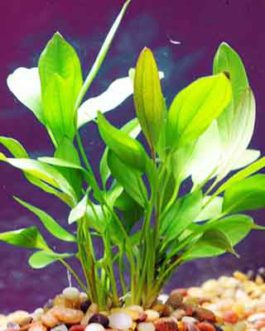Colocasia Black Magic (single plant)
Original price was: ₹600.₹449Current price is: ₹449.
| Plant Type | Aquatic Plants, Bulbs, Perennials |
|---|---|
| Plant Family | Colocasia – Taro |
| Exposure | Partial Sun |
| Season of Interest | Spring (Early,Mid,Late) Summer (Early,Mid,Late) Fall Winter |
| Height | 3’– 6′ (90cm – 180cm) |
| Spread | 3′ – 6′ (90cm – 180cm) |
| Spacing | 72″ (180cm) |
| Water Needs | Average, High |
| Maintenance | Low |
| Soil Type | Clay, Loam, Sand |
73 in stock
Description
Note- Based on the availability we send either tubers or plants.size of the plant also varies depends on availability
Primarily grown for its spectacular foliage, Colocasia esculenta ‘Black Magic’ (Taro) is a tuberous, frost-tender perennial with long-stalked, heart-shaped, smoky purplish-black leaves, up to 2 ft. long (60 cm). Unlike the leaves of Alocasia which point skyward, the leaves of Colocasia droop and point toward the ground. Reminiscent of calla lily flowers, the blossoms consist of a yellowish-green spathe and spadix. They are not particularly showy and are infrequently produced. ‘Black Magic’ is a hassle-free tropical that makes an unforgettable focal point and creates a compelling backdrop for most plants.
- Grows up to 3-6 ft. tall and wide (90-180 cm)
- Performs best in filtered sun or part shade in organically rich, moist to wet soils. Provide a sheltered location to protect the decorative leaves from strong winds.
- Elephant Ears love water and nutrients. They require regular watering, particularly during dry summer periods. Provide regular fertilization during the growing season. The more you feed them, the larger they will grow. They can be planted in up to 6 in. (15 cm) standing water.
- Perfect as a specimen or in groups for beds and borders, near streams and ponds or in large containers.
- Generally disease free. Watch for glasshouse red spider mite, aphids and glasshouse whitefly.
- All parts may cause mild stomach upset if ingesting without cooking.
- Toxic to dogs, toxic to cats, toxic to horses.
- Native to tropical eastern Asia, Colocasia esculenta species was first brought to the Americas as a food crop for slaves. It was later promoted as an alternative crop to potatoes. Colocasia esculenta can tolerate a wide range of wet to dry sites and can easily invade wetland edges, swamps, blackwater streams and riverine forests.
Only logged in customers who have purchased this product may leave a review.










Reviews
There are no reviews yet.